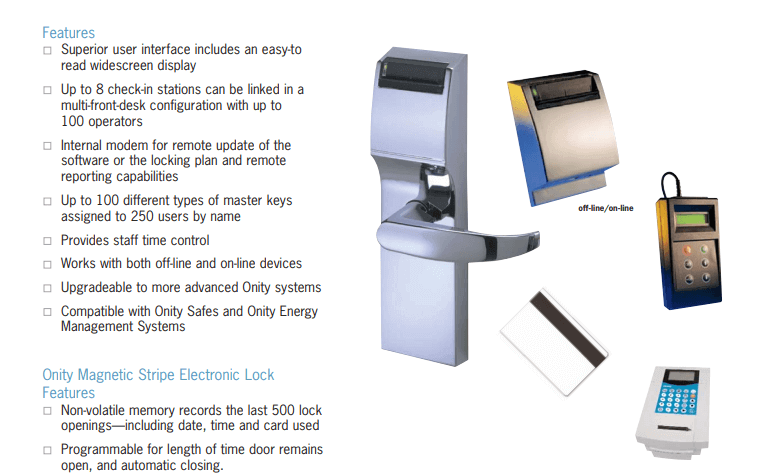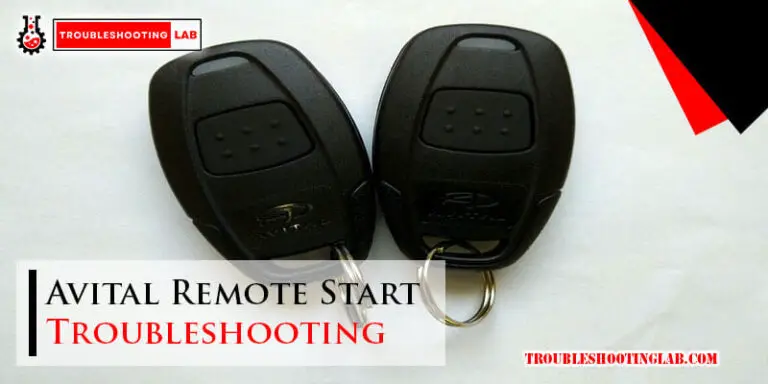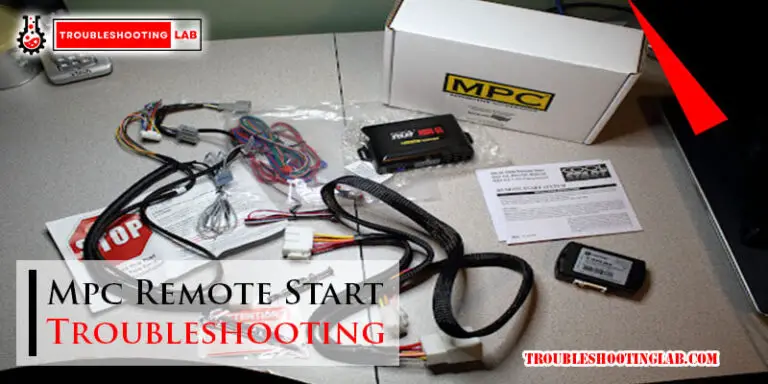Onity Locks Troubleshooting: Quick Fixes for Common Issues
Onity Locks Troubleshooting: Solving Common Issues Made Simple Are you frustrated with your Onity lock not working as it should? Whether it’s a door that won’t unlock, a keycard that’s unresponsive, or a blinking light that just won’t stop, dealing with lock issues can be stressful—especially when security and convenience are on the line.
But here’s the good news: most problems with Onity locks can be resolved quickly with the right guidance. This guide is here to help you. By the time you finish reading, you’ll not only know what’s causing the issue but also how to fix it without unnecessary hassle.
So, if you’re ready to stop stressing and start solving, let’s dive in—you’ll be glad you did.

Credit: www.electroniclocksmith.com
Common Problems With Onity Locks
Onity locks are widely used in hotels, offices, and other facilities for their convenience and security. However, even the best locks can face issues from time to time. Knowing how to troubleshoot common problems can save you frustration and ensure a smoother experience for your guests or employees.
Unresponsive Keycards
Unresponsive keycards are a frequent issue with Onity locks. This can happen if the card is demagnetized or not programmed correctly. Always check if the card is clean and free of scratches before assuming a bigger problem.
If the card seems fine, try reprogramming it using the Onity system. Ensure you’re using the right software settings for the lock. If multiple cards fail, the issue might lie with the card reader itself, which may need cleaning or repair.
Battery-related Issues
Low or dead batteries can lead to locks not functioning at all. If you notice the lock responding sluggishly or failing to engage, it’s time to check the batteries. Most Onity locks have a low-battery indicator, so keep an eye on it to prevent surprises.
Replacing the batteries is straightforward. Use the right type of batteries as specified in the lock’s manual. If replacing them doesn’t fix the issue, check the battery contacts for corrosion or loose connections.
Lock Not Engaging Properly
Sometimes, the lock bolt doesn’t extend or retract smoothly. This can be caused by mechanical wear, debris, or misalignment. Inspect the lock mechanism closely and clean out any dirt or dust that may be interfering with its operation.
If cleaning doesn’t resolve the issue, check for loose screws or components inside the lock. Tighten them if necessary. In severe cases, you might need to replace worn-out parts like the motor or latch.
Error Codes On Display
Modern Onity locks often display error codes when something goes wrong. These codes can seem intimidating, but they’re actually helpful. They point you toward the specific issue, whether it’s a programming error, battery problem, or hardware fault.
Refer to the user manual for a list of error codes and their meanings. For example, a common error might indicate a card programming mismatch. Reset the lock if needed, but contact Onity support for persistent or unclear errors.
Have you faced any of these problems with your Onity locks? Share your experiences in the comments, and let’s troubleshoot together!
Keycard Issues And Solutions
Keycards are the lifeline of Onity locks, but they’re not without their challenges. When your guests or staff face issues with a keycard, it can lead to frustration and delays. Identifying the problem quickly and applying the right fix is essential to keep operations smooth and ensure a positive experience. Let’s dive into common keycard issues and their solutions.
Demagnetized Keycards
Demagnetization is one of the most frequent culprits behind malfunctioning keycards. Keycards can lose their magnetic encoding when placed near magnetic items like phones, wallets, or credit cards.
To prevent this, remind staff and guests to keep their keycards away from such items. If a keycard is already demagnetized, reprogramming it at the front desk is usually the quickest fix. Many properties also keep spare keycards on hand to avoid unnecessary delays.
Improper Keycard Programming
Sometimes, the issue isn’t with the card but how it’s programmed. A mismatched room number or incorrect encoding can render the keycard useless. This often happens during rushed check-ins or busy operations.
Double-check programming details before handing a keycard to a guest. Train your staff on the importance of accuracy during the encoding process. If issues persist, inspect your encoder device for errors or malfunctions—it might need calibration or servicing.
Physical Damage To Keycards
Keycards can suffer wear and tear over time. Cracks, scratches, or dirt can prevent them from functioning correctly. Guests might unknowingly damage their cards by keeping them in their pockets with sharp objects or dropping them.
Inspect damaged cards visually. If you notice physical damage, replace the card immediately. Consider investing in more durable keycards to reduce replacement frequency and save costs in the long run.
Have you ever faced a keycard issue that disrupted your operations? How did you handle it? Addressing these problems proactively can prevent stress and improve guest satisfaction.
Battery Troubleshooting Steps
Dealing with a non-functional Onity lock can be frustrating, especially when the issue lies with the battery. Knowing the right steps to troubleshoot and fix battery-related problems can save you time and stress. Let’s walk through some practical steps to identify and resolve these issues, ensuring your lock stays reliable.
Identifying Low Battery Symptoms
How can you tell if your Onity lock’s battery is running low? Pay attention to small signs. A common symptom is the lock responding slowly or not unlocking at all. Some locks may even emit a beeping sound or flash an indicator light, signaling a low battery.
If you find yourself needing to swipe your card multiple times, that’s another telltale sign. Don’t ignore these clues. A quick check now can prevent a complete lockout later.
Replacing The Battery Safely
Before you begin, gather the tools you need—usually just a screwdriver and the correct replacement batteries. Make sure you have the exact battery type specified by the manufacturer. Using the wrong type can damage the lock or cause it to malfunction.
Start by unscrewing the battery cover on the lock. Remove the old batteries carefully. Avoid touching the battery connectors directly, as oils from your skin can affect performance. Insert the new batteries, ensuring they are aligned correctly with the positive and negative terminals.
Secure the battery cover tightly after replacement. A loose cover can cause connectivity issues. Always double-check your work to ensure nothing is left improperly fastened.
Testing Lock After Battery Replacement
Once the new batteries are in place, it’s time to test the lock. Use your card or key to ensure it unlocks smoothly. If the lock doesn’t respond, recheck the battery installation to confirm proper placement.
Listen for any unusual sounds when testing. A functioning lock should operate quietly. If you hear grinding or prolonged beeping, there may be another issue requiring further inspection.
Testing the lock immediately after replacing the battery ensures you’ve resolved the issue. It also gives you peace of mind, knowing your lock is ready to use without further complications.
Have you ever been locked out due to a dead battery? Taking these steps in advance can save you that hassle. Stay proactive, and your Onity lock will continue to work seamlessly!
Mechanical Lock Failures
Mechanical lock failures with Onity locks can be frustrating, especially when they disrupt the functionality of a door. These issues often stem from wear and tear, improper installation, or neglect. Fortunately, many of them are easy to identify and fix with a bit of troubleshooting.
Loose Or Misaligned Components
A common cause of mechanical failure is loose or misaligned parts. Over time, screws can loosen, causing the lock to shift out of place. This might make it difficult to insert or turn the key properly.
To fix this, grab a screwdriver and check if all screws are tight. Pay special attention to the faceplate and internal mechanisms. If something looks slightly off, realign the components and secure them in place. Small adjustments can save you from replacing the entire lock.
Checking For Obstructions In The Lock
Debris or foreign objects inside the lock can also cause it to malfunction. Dust, dirt, or even tiny pieces of broken keys might block the mechanism. This is especially common in locks exposed to outdoor elements.
Shine a flashlight into the keyhole and see if you notice anything unusual. Use a can of compressed air to blow out any dirt. If you suspect a broken key is inside, a pair of tweezers or a lock pick tool might help you remove it carefully.
Lubricating Moving Parts
Sometimes, locks fail because the internal components are dry. Friction between the moving parts can lead to stiffness or even total lockup. A lack of lubrication is often the culprit.
Apply a small amount of graphite powder or a silicone-based lubricant to the keyhole and moving parts. Avoid using oil-based lubricants as they can attract dirt over time. After lubricating, insert the key and turn it a few times to distribute the lubricant evenly. Notice how much smoother it feels?
Mechanical failures don’t always mean the lock is broken beyond repair. A bit of attention to detail and regular maintenance can extend its life. Have you checked your locks lately?
Error Codes And Their Fixes
Onity locks are designed to provide convenience and security, but occasionally, error codes can pop up, leaving you puzzled. These codes are like the lock’s way of asking for help, and understanding them can save you time and frustration. Let’s dive into practical ways to decode these messages, reset the system, and figure out when it’s time to call in the experts.
Decoding Common Error Messages
When an Onity lock displays an error code, it’s usually pointing to a specific issue. For example, a “BATT” error often indicates low battery levels, while a “ERR 3” might suggest a motor issue. Knowing what these codes mean is your first step toward fixing the problem.
Check the user manual provided with your lock. You’ll find a list of error codes and their definitions. If the lock displays a “BATT” error, replace the batteries with fresh ones. If it’s showing a motor-related error, inspect the lock for physical obstructions like debris or misalignment.
Resetting The Lock System
Sometimes, a simple reset can resolve many error codes. Think of it like restarting your computer when it acts up. To reset your Onity lock, locate the reset button (often inside the battery compartment).
Press and hold the button for about 10 seconds, then release it. The lock should reboot and clear any temporary glitches. If the error persists after resetting, it’s worth checking the wiring or connections for damage.
When To Contact Technical Support
What happens when the error code refuses to go away, despite your best efforts? This is when you need to reach out to Onity’s technical support team. Persistent errors like “ERR 5” or “LOCK FAIL” might indicate a hardware malfunction that requires expert attention.
Before you call, gather details like the lock’s model number, the exact error code, and what troubleshooting steps you’ve already tried. This information helps the support team diagnose the issue faster. Don’t hesitate to ask questions during the call—they’re there to help you.
Have you ever had a lock error that turned out to be something simple, like a loose battery connection? Share your story in the comments—it might help someone else troubleshoot their Onity lock!
Credit: teamdynamix.umich.edu
Preventative Maintenance Tips
Preventative maintenance is the key to keeping your Onity locks running smoothly and avoiding unexpected issues. A little effort now can save you time, money, and stress later. Let’s dive into three essential tips to keep your locks in top shape.
Regular Battery Checks
Dead batteries can turn a functional lock into a source of frustration. Make it a habit to check the battery levels of your Onity locks every few months. If you manage multiple locks, create a schedule to ensure no lock gets overlooked.
Keep spare batteries on hand, especially if your property is in high use, like a hotel or office building. Low battery warnings shouldn’t be ignored—replace them promptly to avoid lockouts. And remember, using high-quality batteries can save you from frequent replacements.
Keycard Management Best Practices
Lost or damaged keycards are common, but they can disrupt your lock system if not managed well. Always issue spare keycards to trusted individuals and record their details for accountability. If a keycard is lost, deactivate it immediately to ensure security.
Train your team to store keycards properly—away from magnets, water, and extreme heat. Mismanaged cards can cause malfunctions, leaving you with frustrated users and extra work. A simple habit like storing keycards in protective sleeves can go a long way.
Inspecting Locks For Wear And Tear
Locks endure daily use, and over time, small issues can escalate into major problems. Regularly inspect the locks for loose screws, dirt buildup, or physical damage. Tighten screws and clean the locks with a soft cloth to ensure smooth operation.
Pay close attention to any unusual sounds or stiffness when using the lock. These could be early signs of wear that need immediate attention. Staying proactive with inspections can extend the lifespan of your locks and keep them working reliably.
Preventative maintenance doesn’t have to be complicated. By following these simple steps, you’ll keep your Onity locks functioning efficiently and avoid unnecessary headaches. So, when was the last time you checked your locks?
Upgrading Or Replacing Onity Locks
Upgrading or replacing Onity locks is a step many property owners consider when troubleshooting doesn’t resolve recurring issues. Whether you’re managing a hotel, an office, or rental properties, knowing when to move on from repairs to a full upgrade or replacement can save you time, money, and frustration. Let’s break down the essentials to make this transition smoother.
When Repairs Are Not Enough
There’s a point where constant repairs start costing more than they’re worth. If your locks frequently jam, drain batteries too fast, or fail to read keycards correctly, it might be time for an upgrade. Older models often struggle to keep up with modern security standards, leaving your property vulnerable.
Think about the downtime caused by faulty locks. If guests or employees frequently complain about access issues, it impacts your reputation. Wouldn’t it be better to invest in reliable replacements rather than patching the same problem repeatedly?
Choosing The Right Replacement Model
Not all Onity locks are the same, and choosing the right model matters. Consider the specific needs of your property. Do you need RFID compatibility, mobile access options, or advanced audit trails? These features can boost security and convenience.
Compatibility is critical. If you’re upgrading from an older Onity system, ensure the new model works seamlessly with your existing infrastructure. Research customer reviews and talk to suppliers about the pros and cons of each model.
Budget is another factor. While high-end models offer premium features, mid-range options often strike a good balance between cost and functionality. What’s your priority—cutting-edge tech or dependable basics?
Professional Installation Benefits
DIY installation might seem tempting, but professional help can save you headaches. Experienced technicians ensure the lock is installed correctly and tested thoroughly. This minimizes the risk of future malfunctions.
Professional installers also provide valuable advice. They can identify potential compatibility issues or recommend additional features you hadn’t considered. Their insights might even save you money in the long run.
Plus, having a warranty-backed installation gives you peace of mind. If something goes wrong, you’ll have expert support to fix it. Isn’t that worth the extra cost?
Upgrading or replacing your Onity locks doesn’t have to be overwhelming. By knowing when repairs aren’t enough, choosing the right model, and trusting professionals for installation, you’re setting yourself up for smoother operations and enhanced security.

Credit: www.acslocks.com
Conclusion
Troubleshooting Onity locks doesn’t have to be complicated. Start with basic checks. Clean the lock and test the battery. Follow the manual for specific error codes. Regular maintenance can help avoid future issues. If problems persist, contacting a professional is a wise choice.
Proper care ensures your locks work smoothly and last longer. Always prioritize safety and functionality for peace of mind. Keep these tips handy for quick fixes anytime. Solving common issues can save time and reduce frustration. A little effort now can prevent bigger problems later.






